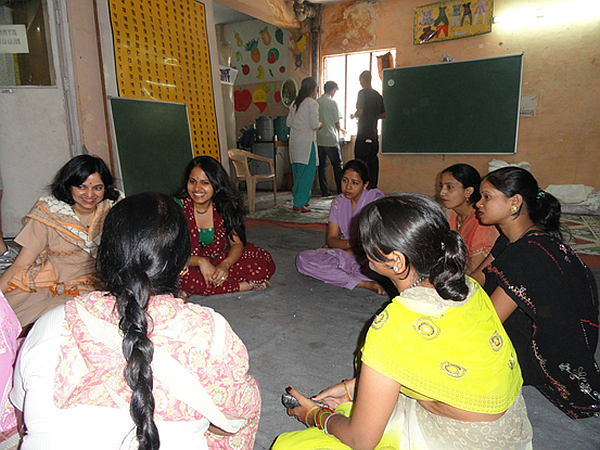Widespread unemployment has prompted policymakers to consider introduction of various training programmes that can help workers accumulate additional skills to obtain new jobs and/ or retain current ones. However, these programmes can only help if targeted individuals take up such opportunities. This column argues that participation in short-term skill-building courses is not just limited by economic factors but is also influenced by intrinsic characteristics such as attitudes towards risk and competition.
Worldwide recession along with increasing unemployment has renewed interest in training programmes that help workers accumulate additional skills to obtain new jobs or retain current ones. The potential economic benefits of participating in such training programmes are substantial in a country like India. However, such programmes can only help address unemployment problems if the targeted individuals seek to participate in the programme. Increasing the supply of training schools and programmes as a policy will do little towards the final goal of increasing skill accumulation and improving labor market outcomes for the unemployed if they shy away from participating in these specialised avenues of skill building.
For a policymaker then, there is a case not just for promoting labour market training programmes, but also to improve and target them better. To address this, it is important to identify not just the economic benefits from participating in the programme, but in addition, understand the socioeconomic and behavioural factors influencing participation into the programme.
In a recent paper, Dasgupta, Gangadharan, Maitra, Mani and Subramanian (2012) find that choosing to participate in programmes aimed at improving skills (in this context choosing to participate in a vocational training programme) is also influenced by intrinsic preferences for risk and competition in addition to other socioeconomic characteristics.
Background
Although, programme participation has been previously studied in different contexts the existing literature relies primarily on survey data to analyse participation, leaving out critical sources of differences arising out of variation in intrinsic characteristics between participants and non-participants. We fill this important gap by combining data from a unique field experiment and a primary survey to examine the differences between applicants and non-applicants of a subsidised labour-market training program in terms of both behavioural traits and socio-economic characteristics. Specifically, Dasgupta et al. (2012) consider three behavioural traits: risk, competitiveness and confidence. To do this, randomly selected applicants and non-applicants to a well-advertised vocational training programme (see Maitra and Mani, 2013 for more details) were asked to participate in an artefactual (or extra-lab) experiment that measured their confidence, attitudes towards risk, and preference for competition.
Figure 1. A training programme for stitching and tailoring

Factors that influence the decision to participate
Our findings suggest that participation in our training programme is affected by both socioeconomic factors and intrinsic characteristics.
Our survey data suggests that younger women, with prior experience in stitching and tailoring, belonging to households with higher income and dependency ratio (ratio of number of children less than five years of age to the number of adult women in the household), have a significantly higher probability of applying to the training programme. We also find that caste acts as an important barrier to programme participation. Women belonging to the backward class are significantly less likely to apply to the training programme.
Figure 2. Group discussion with participants of the training programme

Results from our behavioural experiment further reveal that women who have greater preference for risk and are more competitive are significantly more likely to apply to the training programme.
These findings suggest that focusing only on the socioeconomic and demographic characteristics, as done in the literature so far, might not be sufficient to fully explain why individuals decide to participate or not participate in a training programme. Participants’ intrinsic traits are important determinants of this decision, and can influence take up rates in such programmes. As a consequence, intrinsic characteristics can stop one from benefitting from participating in programmes that have huge welfare gains.
Lessons for the future
There are several implications of these results. First, the underlying differences in traits can potentially explain the varied policy outcomes often observed in the field: for example, why a programme succeeds in certain neighborhoods and not in others, even after accounting for a range of observable characteristics.
Second, identifying the specific sources of behavioural traits can help researchers address the participation decision better by specifically accounting for these characteristics instead of including them in the black box called unobservables.
Finally, the inclusion and better measurement of these behavioural traits can inform policymakers how to devise and advertise new policies aimed at improving participation rates. For example, for an observed level of risk attitudes, a policy can be promoted such that the risk associated with its returns are better articulated, thereby influencing the probability weights used by individuals to calculate their expected payoffs.
Watch a video of Puskhar Maitra presenting the underlying research at the 4th IGC ISI India Development Policy Conference (December 17-18, 2013, New Delhi)
Further Reading
- Utteeyo Dasgupta, Lata Gangadharan, Pushkar Maitra, Subha Mani and Samyukta Subramanian (2012): Choosing to be Trained: Evidence from a Field Experiment, Fordham Discussion Paper Series DP2012-01, Fordham University, Department of Economics.
- Maitra, P. and S. Mani (2013): Learning and Earning: Evidence from a Randomized Evaluation, Fordham Discussion Paper Series DP2013-02, Fordham University, Department of Economics.




 02 September, 2013
02 September, 2013 








Comments will be held for moderation. Your contact information will not be made public.